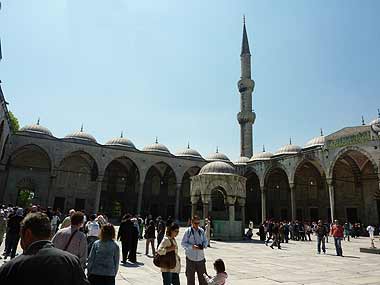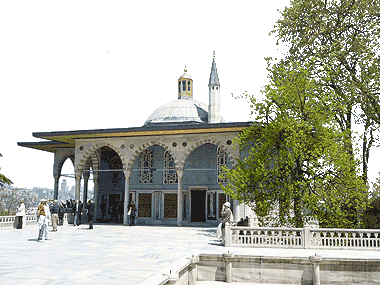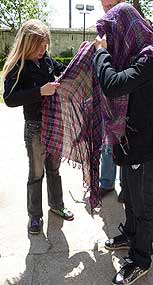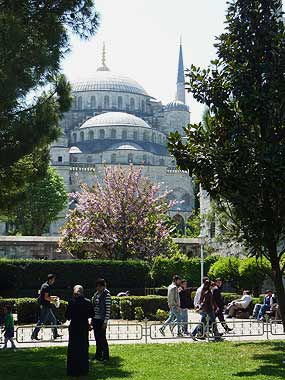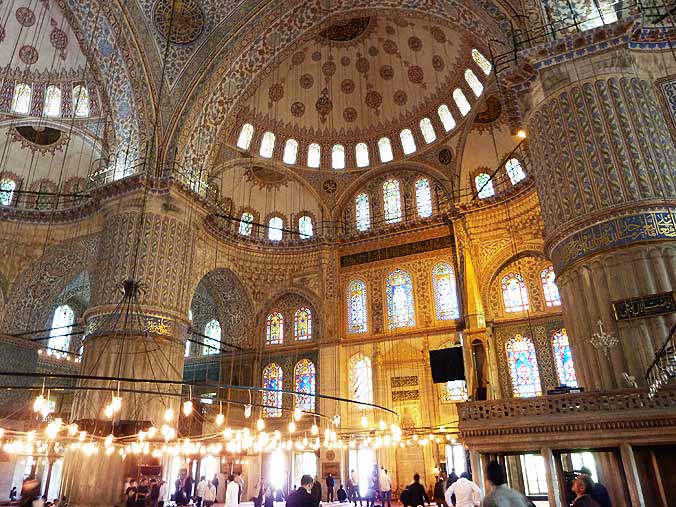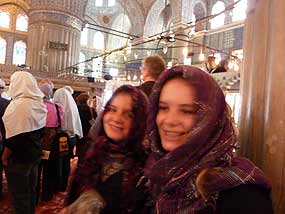Day 3 (part 1, the morning)
the Topkapi palace and the Blue Mosque
The Topkapi Palace
The third day is a sunday. As usual we start the day by relishing the
breakfast and the view. Then quickly to the Topkapi palace (built 1459-1465,
10 minutes by foot), we want to be there early.
There are no queues at the ticketoffice. Once inside we first go to the
harem to buy the tickets for that part. The advice given by Turkey
Travel Planner is very valuable: there are very few people this early
in the harem. It's quiet and peaceful, you just hear some birds twittering
cheerfully, it's easy to imagine yourself 400 years ago in this place.
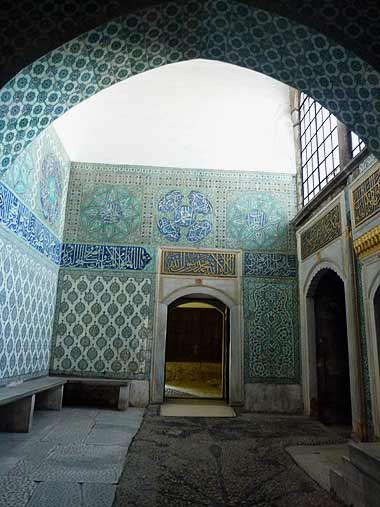
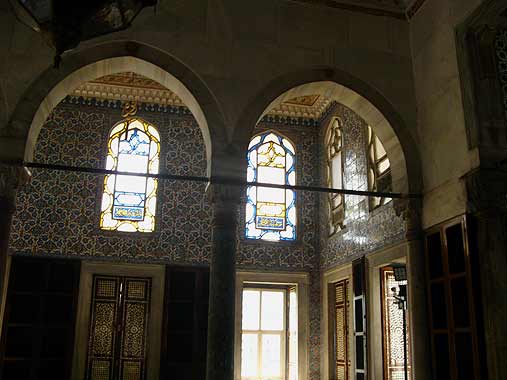
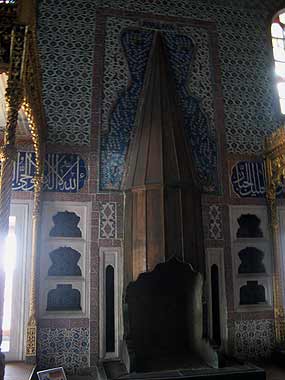
The mother of the Sultan has her own apartments including her own bathroom.
In the harem the only men that are allowed to visit are the Sultan and his sons, the eunuchs who guard and serve the women and every now and then a clockmaker (to tend to the clocks).

Below a photo by Roos that shows the view from the harem.
Below to the right the apartments of the Sultan's favorite concubines.

We also pass the well known Yesil Ev (Green House), a beautifully restored house that is an hotel now, across the street from the baths of Roxelana (now a carpetstore).
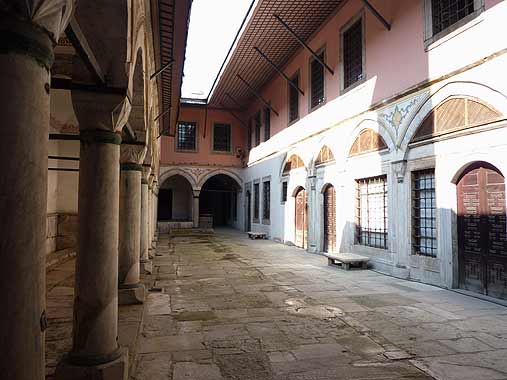

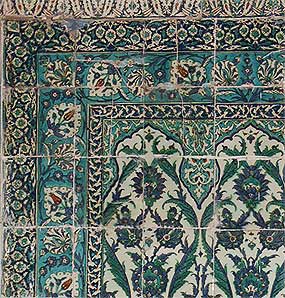
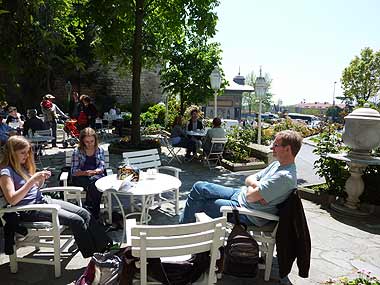

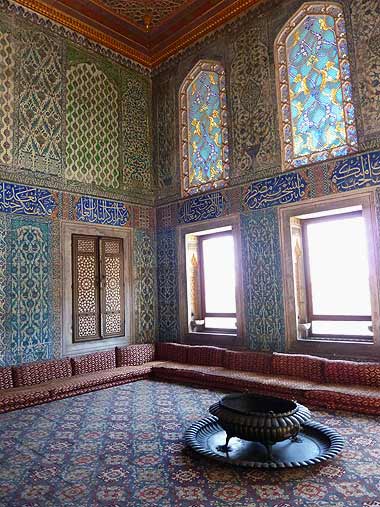
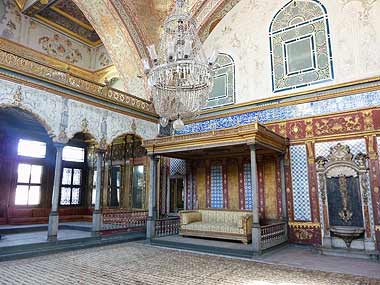
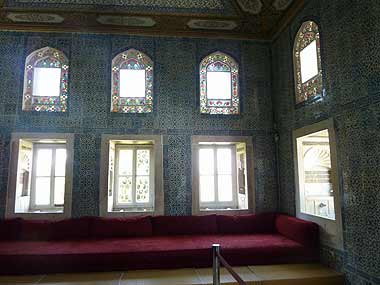
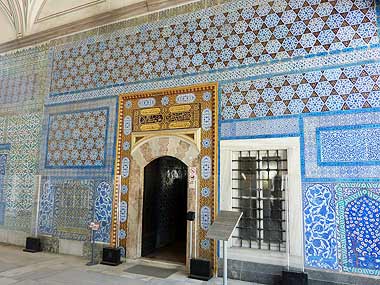
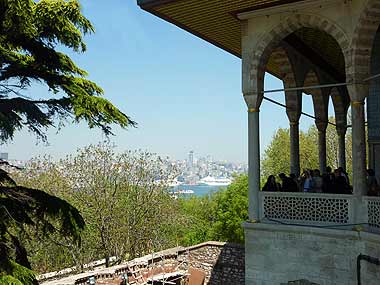
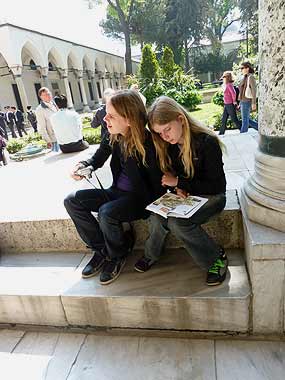
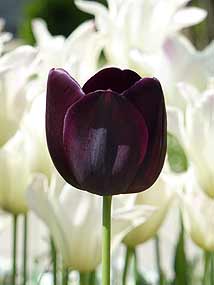

Photos above: the circumcision pavilion from the inside and from the
outside.
Photos to the left and below: the Baghdadpavilion, built to commemorate
the capture of Baghdad (1639) and the view the Sultan enjoyed to the Bosphorus
and the Sea of Marmara.
When we saw all that we possibly could(the Miniature and Portrait Gallery
and the Clock Chamber were closed unfortunately)we had lunch outside of
the palacewalls, near the Imperial Gate at Divan Yolu, on the corner of
Sogukçesme Sokagi street(=sokak) of the cold (=soguk) fountain
(=çesme).
We had a view of the Fountain of Ahmet III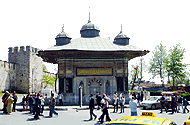 ,
from the Tulip
Period (baroque like with lots of ornaments etc, early 17th century)
,
from the Tulip
Period (baroque like with lots of ornaments etc, early 17th century)
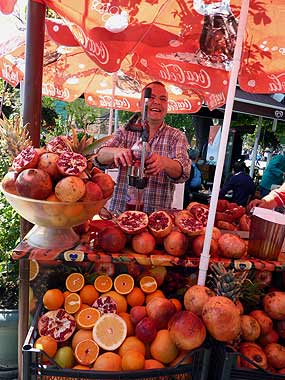
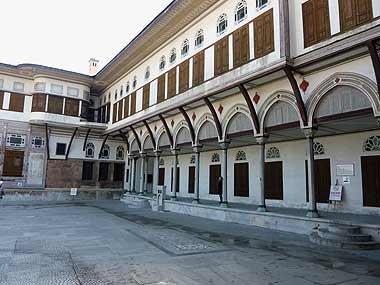
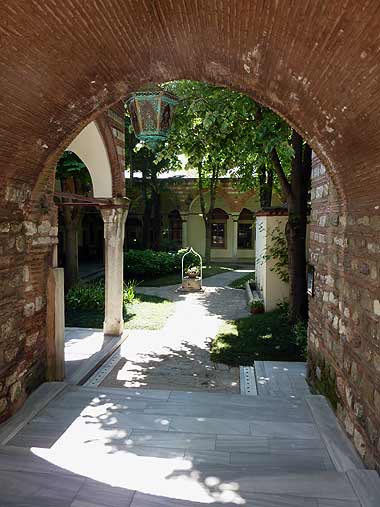
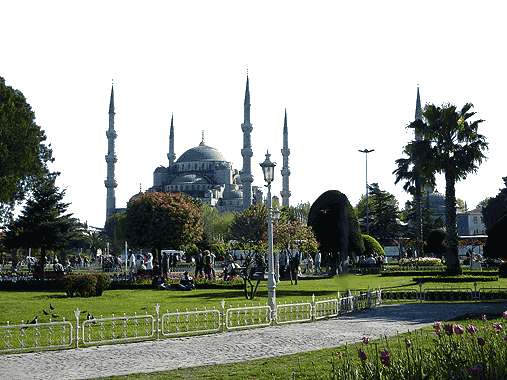
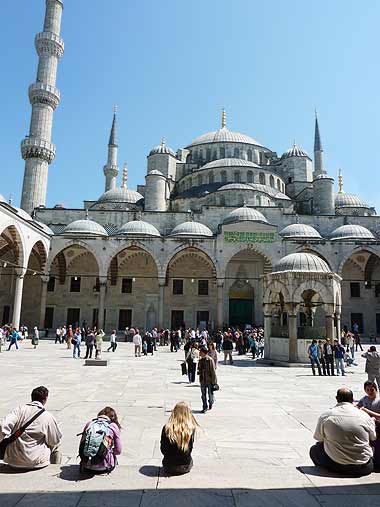
We saw the Blue
Mosque from a distance on our first day(photo at the left), today
we will really visit it. It is one of the most famous mosques in he world,
built between 1609 and 1616, having six minarets.
T he tourist entrance is on the right side. You have to stand in line
for a while because everybody has to take off their shoes and (women)
cover their hair.
